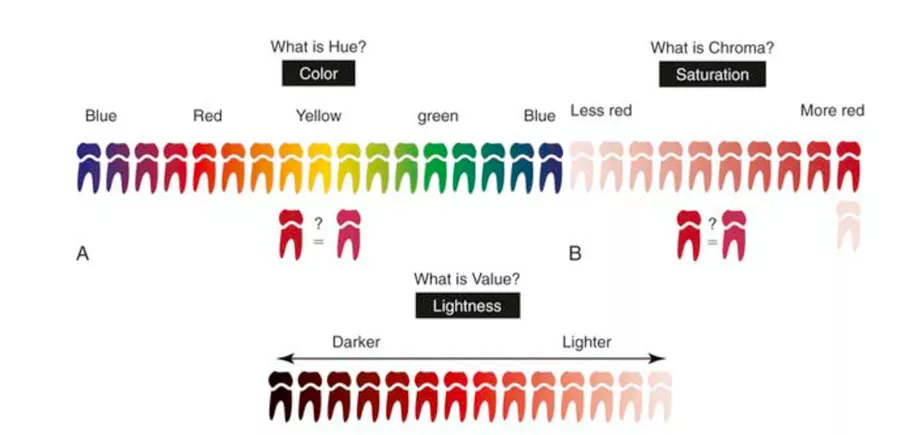Hue, Value and Chroma
09/10/2024
Color Color What Colour do you Choose? We often tend to make color choices, even when we don’t realize. But unlike the usual times, choosing the color shade while restoring with composites has been a challenging task for us given the complexity of 16 shades to choose from!
Did you know?
A Human eye can see approximately 10 million colors.... But the ability to detect and discriminate color varies from person to person.
- The human perception of color results from interaction of three elements: Light source, object, and observer as all these elements can be modified and affect the final perception of color.
- The human eye and brain enable color vision with the help of specialized neurons which function as photoreceptors called rods (sensitive to low light) and cones (sensitive to bright light) present in the inner most layer of retina.
- The visual color matching in dentistry is based on three-dimensional model devised by American Artist Alfred H. Munsell in 1898.It forms the basis of color objects in three dimensions
Now, let’s understand the three basic dimensions of color which plays a pivotal vital role for shade selection.
- Hue: This refers to “pure” colors which are found on the basic color wheel like red, green, blue or yellow etc.
- Value: The dimension of value refers to the lightness of a color. It is the achromatic vertical scale from black to white representing all shades of gray. A tooth that appears bright or lighter after bleaching is one such example.
- Chroma: It is related to the variation in strength of the same color. Example: A tooth is redder or yellower in appearance at cervical region of the canine. As the chroma increases hue becomes more specific.

Fay Gold step, George Freedman, Section A Understanding and Manipulating Color
Other Indirect optical characteristics of teeth including translucency, opalescence, opacity, surface roughness, surface gloss and fluorescence, are also relevant in addition to hue, value and chroma. Such optical properties give a natural restorative look to teeth.
Stay tuned for the upcoming blog, where we will take a deeper dive into shade selection.
Reference:
Trends Biomater. Artif. Organs, 25(4), 172-175 (2011) http://www.sbaoi.org Color and Shade Matching in DentistryMohammed Shammas*, Rama Krishna Alla Faculty of Dentistry, Al-Fateh University of Medical Sciences, Tripoli, Libya



